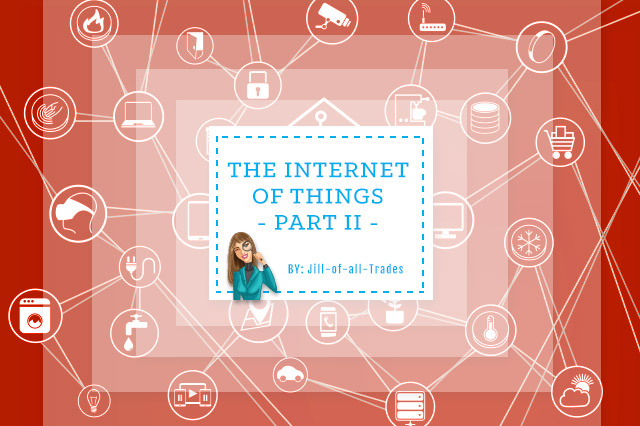Internet of Things Part II
 September 15, 2015 | By Ilfusion Team
September 15, 2015 | By Ilfusion Team
The Internet of Things is Here! Whether you’re just tuning in, have read other articles about the subject, or if you’ve read the first part of our blog Internet of Things, you probably know what the internet of things is. It will soon become a critical facet to our technology world, gathering data in ways that we could have never accomplished before. It’s easy to predict that this new wave of technology will bring about many changes. What you may not be able to predict, though, is how it is going to change the way we interact with technology in an AESTHETIC way.
In the world of digital graphic design we are constantly seeking the perfect balance between elegance and efficiency. Successful design guides the user through the digital experience without distraction, yet looks amazing while doing it. As our technology has evolved, we as designers have been trying to remain one step ahead, planning out the most efficient route of user experience while seeking opportunities to look edgy, intriguing or impressive. However, because of the direction technology is taking, efficient and elegant design is harder to come by. We have downsized from larger desktop computers to miniature hand-held communicators that have more capabilities than last year’s line of laptops. That means less room to create, less room to communicate and express brand attributes, features and benefits. Every pixel counts that much more, and there are that many more opportunities to fail the user.
The migration to mobile friendly websites started a trend that gave way for the Internet of Things to develop, and quickly became a new standard for digital design. Now, we don’t just design a website for desktop and then allow everything to truncate into mobile-sized proportions. True mobile friendly websites deliver a completely unique user experience that is specifically geared toward smartphone dimensions and gestures, which eliminates the shortcomings of desktop-focused web design. This trend gave way for companies to develop their own mobile applications, where users could interact directly with the product or service through their mobile device. This was essential to the birth of the Internet of Things. As users started to employ their mobile device over their desktop computer, companies began developing more and more user technology for the mobile platform, which exposed an underlying truth: People would rather use a small screen communicator to manage their lives than a larger, stationary machine despite the limitation in visual effects, detail and computing power. Sounds like a surprising trend, yet approximately 75% of our internet experience is viewed on a mobile platform. -Comscore
Because we are moving to smaller screens overall, design will have to become smaller too. The Internet of Things is essentially a network of technology applications that are able to share data back and forth between multiple devices. The mobile phone will become the universal remote for all of these applications, which will increase the demand for user experience design for smaller screens over desktop web design. They say the devil’s in the details, and that will become more and more apparent as we move forward with digital design, because each design choice will count for more with such limited space. This means that more intricate details in design will have to step aside and make way for cleaner, possibly more impactful design systems. Choices like font selection, color codes and icon systems will become the most important way-finding details, presenting the challenge once again for designers to create elegant efficiency in their designs.
What will this mean for the future of digital design? Overall: simplification. With the limited amount of space, we will have to find more and more subtle opportunities to impress without presenting the user with something confusing, elaborate, busy or dull. More parameters and requirements will have to be met, so designers have to make their way “out of the box” again. This will bring upon a trend of pictorial language over one of verbal language.
We have seen this kind of shift with companies like Ikea, opting to use pictorial, basic visual instructions over poorly translated vocabulary words. The world is starting to understand on a global scale that pictures and icons are even more universally understood than simple verbal prompts, so these will start to come to the forefront in matters of user experience design. This could ultimately cut out confusion during user experience as well as unify cultures to a degree using technology. As of now, mobile applications and programs with sophisticated digital experiences are all either very customized or specialized in how they are designed, navigated, and programmed. However, as we saw with the world of web design, we can realistically assume that more and more standardized practices for user experience design will reveal themselves and paint the picture for what is good user experience design and what is not.
What will they think of next? Hackers curing cancer? RFID chips replacing out-patient services for hospitals? Or what about enhanced reality video games? More on that last one in weeks to come. Until next time!
Filed in: Articles, Marketing

